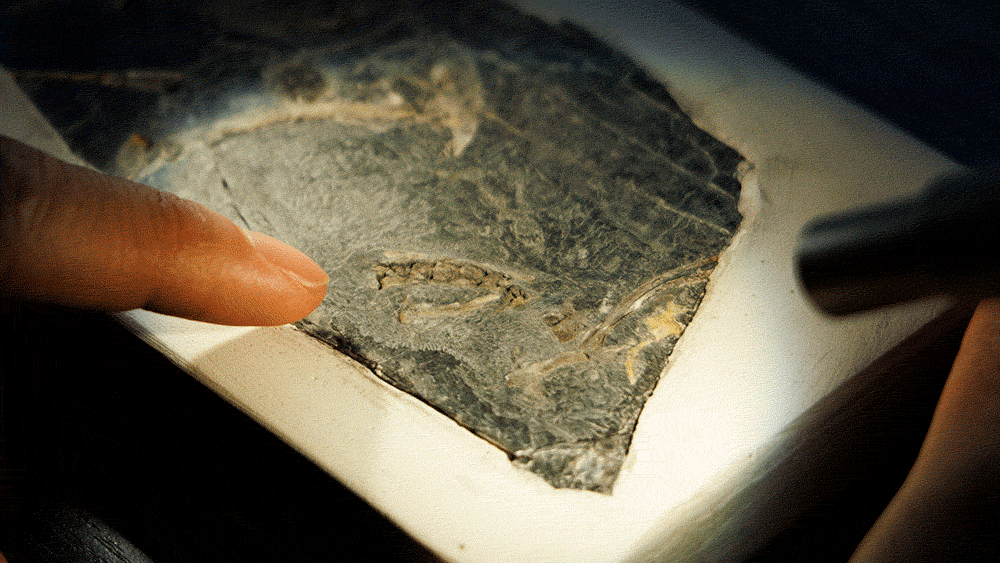
Rough Ride: A Woman’s Journey to Save Her Stallion
“I think Hanzi might be dying.” That was all Zhang Jingyi was able to say into the phone to her best friend before she broke down in tears. Her beloved stallion, Hanzi, who had helped her through the dark days of postnatal depression, had broken his leg — a potential death sentence.
The limbs of a horse are fragile. When one leg is injured, it increases the pressure on the other three and can cause laminitis, an inflammation of the hoof. The condition is extremely uncomfortable for the animal, as is the treatment for a broken bone, which requires putting the leg in a cast and preventing the horse from moving for months.
In this situation, most owners — knowing that they will likely never be able to ride their horse again, even if it fully heals — will opt for euthanasia, to save time and money and spare the animal further pain.
But Zhang wasn’t ready to give up on Hanzi. Instead, she went on to consult sources from around the world for guidance, spent hundreds of thousands of yuan on treatment, and accompanied her stallion through six hard months of immobilization and rehabilitation.
Growing together
Zhang was in her mid-20s when she purchased Hanzi for 100,000 yuan ($14,110) in March 2020. He was 3 years old, stood at a relatively short 16.2 hands (1.65 meters), and had a rare white-brown coat. However, after getting him back home, Zhang quickly discovered Hanzi had no training. Due to his stature, Zhang’s friends initially joked that he was an “ugly, malnourished donkey” that couldn’t follow basic instructions. He was also odd in that he liked to sleep belly-up, but whenever he did so, his legs would get stuck in the gate of his stable at the Beijing Sport University, and someone would have to help him get free.

Yet, Hanzi’s strength was his easygoing nature, which proved a calming presence during a tumultuous time in Zhang’s life. She’d recently given birth and was struggling emotionally. To wind down, she would visit Hanzi every day, riding him in laps and over hurdles. “When you’re trying to escape from society, a horse can hold you up,” she says, adding that she took fulfillment from seeing him gradually progress. Over two years, Hanzi grew to a height of 16.92 hands and learned how to power up, follow commands, and jump over obstacles.
Then, in late 2022, Zhang’s peaceful life was shattered. When the university went into lockdown that November because of the pandemic, the horses in its stables were sealed in. They were eventually able to run free after a month, but several horses, including Hanzi, appeared unsure of their footing and crashed their hooves against the ground. Zhang recorded footage of her horse’s gait and sent it to a vet. An X-ray later confirmed Hanzi had a fracture in the small pastern bone, which sits just above the hoof, in his right front leg.
With equestrianism still a niche sport in China, medical resources for sick horses are limited. Zhang spent the first few days contacting every veterinary service she could find nationwide, but none knew how to treat Hanzi’s fracture. In the short term, all she could do was ask a regular doctor to put the leg in a cast, which bought her a little more time.

Zhang tried reading international journals and even looked at overseas treatment options for Hanzi, but the cost and administrative procedures were too inhibitive. One vet was willing to fly to China, but the only place in the country suitable for performing surgery on a horse is a commercial hospital in the eastern Jiangsu province, and Hanzi was in no condition to travel that great distance.
As the days passed and Hanzi’s discomfort worsened, Zhang was advised to discontinue her search for treatment and to schedule her horse for euthanasia. With all hope seemingly lost, Zhang set a date for him to be put down, as well as contacted an equine fertility agency to see if it could extract sperm samples to one day produce a foal.
Lifting spirits
The day before Hanzi’s appointment, Zhang received a call from her brother, a veterinary surgeon specializing in small animals, about a colleague who had saved a horse with a leg fracture. She immediately set up an online group chat, and together they devised a treatment plan.
At first, Zhang attempted to DIY a Schroeder-Thomas splint, which vets often use to immobilize fractured limbs in small animals. However, this approach failed, as the technique is usually reserved for hind legs, and finding material strong enough to support Hanzi’s 500-kilogram frame proved impossible.

The clock was ticking. After 72 hours, Hanzi’s perception of pain would diminish, meaning there was a risk he would try to stand on his broken leg, further aggravating the injury. To avoid this, Zhang’s brother suggested hoisting the horse in a sling, to reduce the weight on its legs while standing.
Specialized support slings are commonly used overseas for horses with leg fractures, but they are relatively unknown in China. Zhang had to search online and send screenshots to vets to find a solution. Eventually, she bought two fire hoses and got a seamstress to sew them into a sling, which was then connected to strong wooden stakes in the university’s equine therapy room. Once hoisted, Hanzi adapted quickly, and he would sometimes even lift all four legs and swing back and forth.
The reparative stage of a fracture in a horse is similar to that of a human: a clot forms around the splint before being replaced by a callus — a type of soft tissue — that holds the bone together and hardens over time. However, in equine species, if the callus does not harden quickly enough, the wound might never heal.
After a week, X-rays showed that a callus had started to grow, but slower than expected. Zhang was told by a vet that if the callus was not 30% to 50% bigger within a month, Hanzi may not recover. Hearing this, she decided to hoist Hanzi higher, so that his hooves could no longer reach the ground.

Over time, more people stepped in to help. Being unable to move, Hanzi started to become grumpy and depressed, so Zhang, her friends, and trainers from the stables would stop by regularly to keep him company. A university janitor who lived next door, would get up at around two o’clock in the morning to make sure the horse was safe and sound. This campaign continued until July last year, when his callus had healed, which meant his initial treatment was over. When he was removed from the sling, Hanzi was unable to stand and fell to his knees. “At this point we didn’t know whether he could hang on, whether he’d ever be able to stand or walk again,” Zhang says.
Rebuilding Hanzi’s muscle strength was another slow process. To start, his trainer would take him on short 10-minute walks around the stables. Watching as the trembling horse took one tentative step after another, Zhang feared he was about to stumble to the ground each time. Yet, Hanzi endured.


Zhang recorded his recovery with photos and videos, sharing them on social media with messages of thanks to the people who helped along the way. While some netizens were supportive, others questioned why she would spend 200,000 yuan — the total cost of the materials and treatment room — on a horse she purchased for half that amount, especially as it can no longer take part in competitive sports such as horse racing or equestrian events.
As of July, Hanzi had made a remarkable recovery. He could walk at an even pace and stand unaided as he grazed on a sloping meadow.
“No matter what it took, getting him back was worth it,” Zhang says. “Hanzi is family to me. I could’ve spent the money for his treatment on another, more expensive horse, but it wouldn’t be the same. He might seem useless to some people now, just eating and sleeping, but he’s an exceptionally strong young guy. It’s a miracle he’s able to live happily every day after everything we’ve been through.”
Zhang may never ride Hanzi again, but he’s alive, and that’s good enough for her.

Reported by Yang Xiaotong.
A version of this article originally appeared in Oh Youth! (36Kr) . It has been translated and edited for brevity and clarity, and is republished here with permission.
Translator: Eunice Ouyang; editors: Wang Juyi and Hao Qibao.














